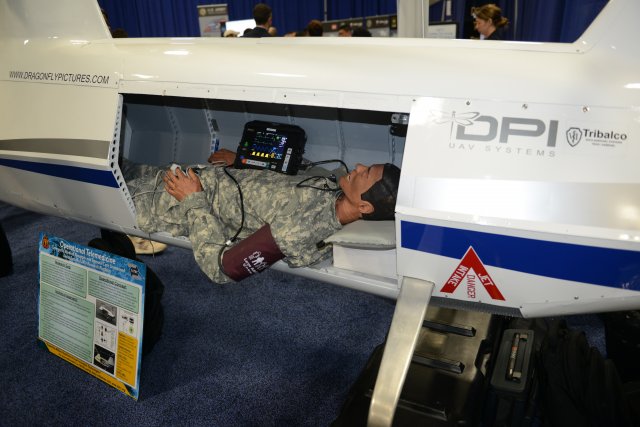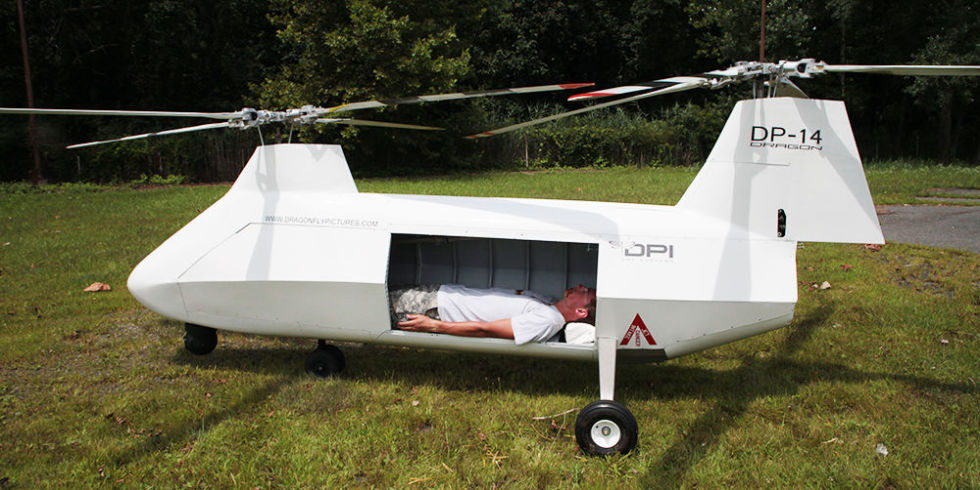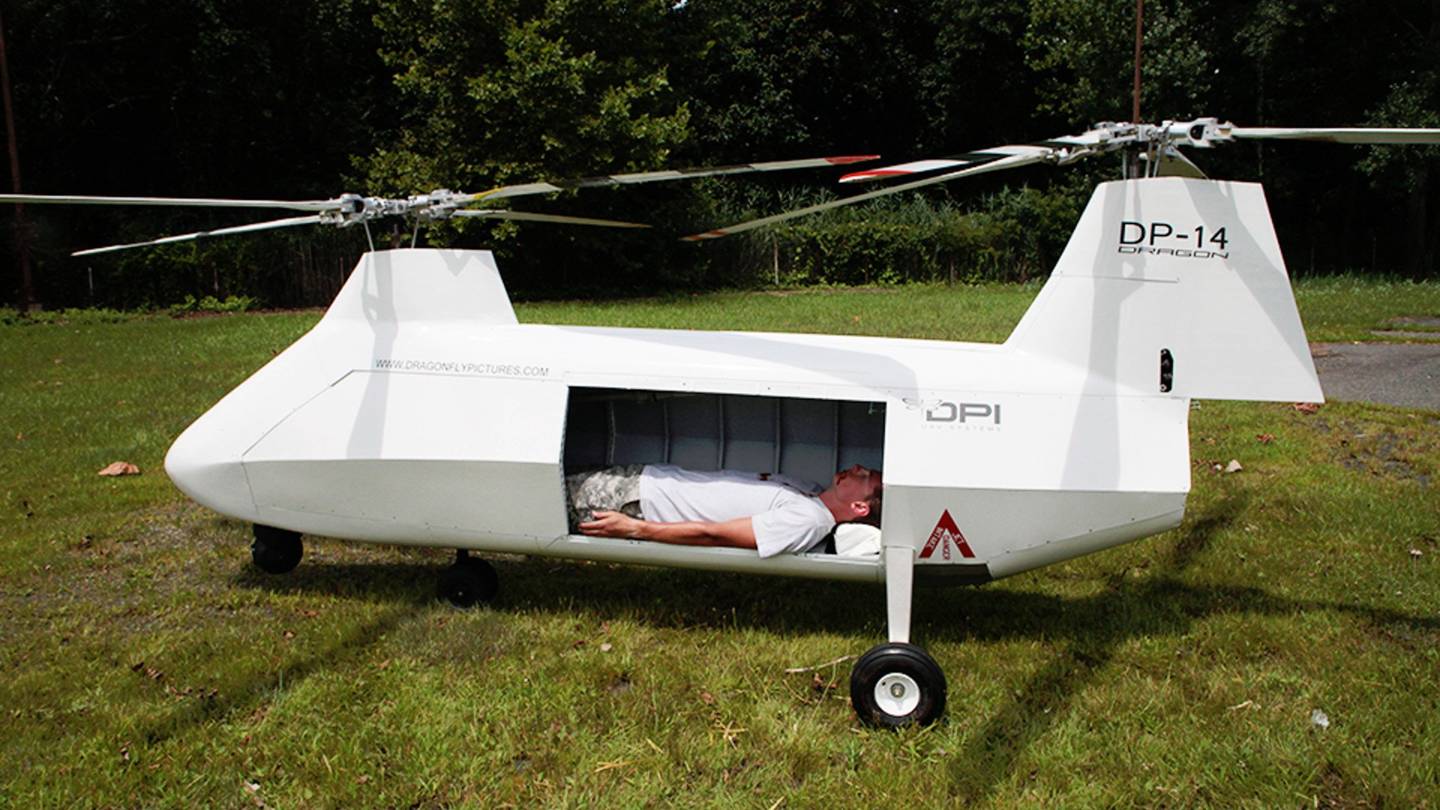MedRAS News Archive 2017
December 2017

Joined by a number of key stakeholders from all branches of service on 25 - 26 October at the “Flying Circus” in Bealeton, VA, members of TATRC’s Operational Telemedicine Lab witnessed on the first day, what was likely the first public, totally autonomous flight of a Vietnam era UH-1 Huey aircraft equipped with the Office of Naval Research (ONR) Autonomous Aerial Cargo Utility System (AACUS) prototype.
Read the Article
In early October, the ongoing research efforts of TATRC’s Operational Telemedicine Lab and two of its members, Mr. Nathan Fisher and Ms. Rebecca Lee, were thrust into the limelight of the Association of the U.S. Army (AUSA) Annual Symposium when the Office of the Assistant Secretary of the Army for Acquisition, Logistics, and Technology ASA(ALT) requested USAMRMC to display and present the prototype “Emergency Medical Resupply & Enroute Care Unmanned Aerial Systems Research Platform” in ASA(ALT)’s “Innovator’s Corner” which served as a technology display area.
Read the Article
Bold Quest 2017 is a Department of Defense led demonstration that brings military personnel from 14 countries to Savannah, GA to conduct communication and coordination exercises on Fort Stewart. United States military service members and NATO Headquarters staff are joined by troops from Australia, Belgium, Canada, Denmark, Finland, France, Germany, Italy, Netherlands, Norway, New Zealand, Poland, Sweden and the United Kingdom.
Read the Article
TATRC’s Operational Telemedicine Lab has partnered with Remote Diagnostics Technology (RDT) and General Dynamics to conduct technical research into establishing bi-directional medical communications across multiple security classification domains between medical personnel on site in an operational environment and clinical specialists at a Role III Combat Support Hospital or Role IV Medical Treatment Facility (MTF) (“brick & mortar” hospital).
Read the ArticleOctober 2017

Although a fully-equipped medical evacuation aircraft with a trained crew and pilot will likely always be the best option to get a wounded Soldier off the battlefield, the Army is looking at unmanned aerial systems as a possible "plan B" for when that ideal isn't possible.
Read the Article
The US Army’s Telemedicine and Advanced Technology Research Center (TATRC) and Dragonfly Picture (DPI) are using the company’s tandem rotor unmanned aircraft system (UAS) to determine the feasibility of transporting soldiers injured or wounded on the battlefield using an unmanned platform.
Read the ArticleSeptember 2017

This year, two of TATRC Labs joined forces and teamed together. TATRC’s Operational Telemedicine (Op-T-med) Lab and the Biotechnology High Performance Computing Software Applications Institute (BHSAI), began a collaborative effort to implement BHSAI’s Automated Processing of the Physiologic Registry for Assessment of Injury Severity (APPRAISE) system on a mobile device.
Read the Article
The call goes out: “Medic!” When you’re a front line medic, attached with a dismounted patrol in an austere environment, and you hear that call, your heart begins to race. You ask yourself, “What kind of injury am I dealing with? Will I have the proper amount of gear?” Then you begin to rehearse your procedures in your head. You come up to the casualty and you begin your assessment.
Read the Article
Mr. James Beach and Mr. Larry Markins from TATRC’s Operational Telemedicine Lab, along with LTC Jeremy Pamplin, MD from Madigan Army Medical Center (MAMC), supported the Program Executive Office Aviation, Project Manager Aviation Systems in the assessment of potential mission command capabilities during the Network Integration Evaluation (NIE) 17.2 at Fort Bliss, Texas in July.
Read the Article
On behalf of the Army Medical Command, the Association of the United States Army Institute of Land Warfare sponsored an Army Medical Symposium and Exposition 24 - 25 July at the Grand Hyatt in San Antonio, Texas.
Read the ArticleJuly 2017

Gary Gilbert leads the USAMRMC Telemedicine & Advanced Technologies Research Canter (TATRC) Medical Intelligent Systems Laboratory. Composed of a robust group of research scientists and technologists in the fields of artificial intelligence, robotics, engineering, computer science, telecommunications as well as experienced research managers and field operators in combat health services support and force health protection, this lab is focused on engineering the future of military operational medicine in the Multi Domain Battlespace.
Read the ArticleJune 2017

TATRC’s ongoing research efforts were showcased in the April-June edition of Army AL&T Magazine as part of a set of special feature articles focused on advancements in the areas of robotics, artificial intelligence and autonomous systems.
Read the Article
On 27 March, Dragonfly Pictures Inc. (DPI) was awarded a Phase 3 SBIR contract to collaborate with TATRC’s Operational Medicine Lab on a research project entitled “Emergency Medical Resupply & Enroute Care Unmanned Aerial System (UAS) Research Platform,” which was funded by Joint Program Committee-6 for Combat Casualty Care.
Read the Article
Mr. Carl Manemeit, Deputy Lab Manager for TATRC’s Operational Medicine Laboratory, was recognized as the Q3 TATRC Employee of the Quarter because he continuously models and displays the qualities of an ideal award recipient as stated in the Employee of the Quarter Charter Memo.
Read the Article
Senior members from USAMRMC and TATRC were well represented at this year’s Special Operations Medical Scientific Assembly (SOMSA) held 22-25 May, in Charlotte, NC.
Read the ArticleMarch 2017

Ms. Khiya Jeannette Canadiate has joined our TATRC team as Project Officer primarily supporting the Operational Telemedicine Lab. She comes with 2 years of test experience and 3 years of electrical design experience.
Read the Article
At the end of last year, TATRC was requested to participate in a “Joint Mission Thread” workshop which was held at the Johns Hopkins University Applied Physics Lab (APL), commissioned by the Joint Staff Operational Plans and Joint Force Development, J7s, Joint Concepts Division, to inform the implementation of the recently published Joint Concept for Robotics and Autonomous Systems (JCRAS).
Read the Article
The U.S. Army thinks a small, tandem-rotor drone could be rushing injured troops from the battlefield to field hospitals in the near future. Dragonfly Pictures, Inc. (DPI) DP-14 Hawk would be the latest way to getting casualties quickly out of harm’s way and into the care of medical professionals.
Read the Article
Military drones aren't just for attack or surveillance. If the U.S. Army has its way, its medics could soon call on unmanned helicopters to evacuate the wounded to nearby aid stations.
Read the Article
Here is an interesting innovation and concept, using a drone to evacuate wounded off the battlefield. The DP14 Hawk is similar to a miniature CH-47 Chinook helicopter, which reportedly can carry up to 430 pounds for about 2.4 hours.
Read the Article
Dragonfly Pictures Inc.’s DP14 Hawk, a dual-rotor unmanned aerial system, could play a role in a U.S. Army effort to one day use drones to evacuate wounded soldiers from the battlefield.
The DP14 Hawk, which resembles a miniature CH-47 Chinook helicopter, can carry 430 pounds in its six-foot by 20-inch cargo space for about 2.4 hours.
Read the Article
In a conference room of the U.S. Army Medical Research and Materiel Command (USAMRMC) headquarters at Fort Detrick, Maryland, in January 2017, leaders and staffers listened intently as Gen. David Perkins, commander of the U.S. Army Training and Doctrine Command, outlined the future of the Army—the multidomain battlefield.
Read the Article